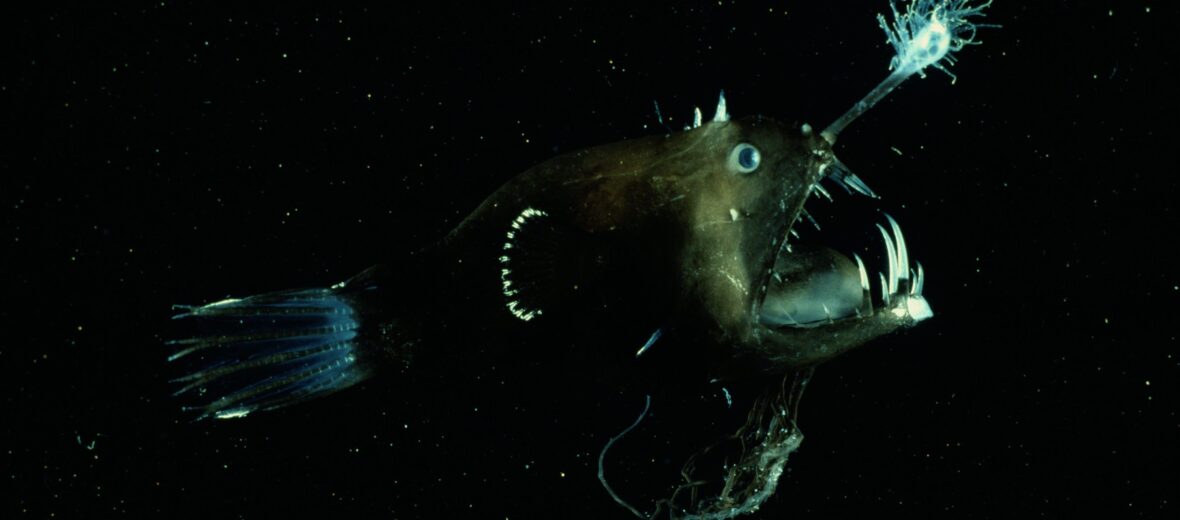
One of the stranger looking fish in the animal kingdom is the anglerfish. These deep sea creatures lurk about in the shadows looking for food or a mate in a world of total darkness. They use only a small, bio-luminescent proboscis to attract food to their mouths filled with razor sharp teeth. The males are even stranger.
First the Stats…
Scientific name: Lophiiformes
Weight: Up to 70 lbs.
Size: Up to 3.3 feet
Lifespan: Up to 20 years
Now on to the Facts!
1.) The dongle that sticks out from the head of the Anglerfish is called esca. The Anglerfish attracts its prey with bio-luminescence of the esca which is produced by symbiotic bacteria.
2.) The anglerfish ensnares its victims with its massive sharp teeth.
3.) Anglers can extend their bottom jaw to capture larger fish.
4.) These fish can be found in all the world’s oceans.
5.) Females lay their eggs in a large, sheet-like, gelatinous substance about 30 feet long and 3 feet wide. When the eggs hatch, the larvae will feed on plankton and move on to larger prey as they grow.
But wait, there’s more on the anglerfish!
6.) The anglerfish is typically found at depths of around 3,000 feet.
7.) Due to its round body, it wobbles when it swims.
Did you know…?
The male angler is much smaller than the female and completely different in appearance. It is about the size of your finger and typically darker in color.
8.) The deep sea anglerfish has a very strange way of reproducing. When a male angler matures, its digestive system degenerates, making it impossible for it to eat. It has to quickly find a female or starve to death. The male has small hook-like teeth. It uses these teeth to attach itself to the side of the female. Once he attaches onto her skin, he releases an enzyme that dissolves the skin of his mouth and that of her body; then the two become fused together as one. The male will spend the rest of its life attached to the female in a sort of symbiotic relationship, getting all of his nourishment from her. Talk about clingy.
9.) A female can carry up to six males on her body at a time!
10.) The bio-luminescence emitted is always blue in color.
Now a Short Anglerfish Video!
Also, check out the Critter Science YouTube channel. Videos added frequently!
Want to suggest a critter for me to write about? Let me know here.



